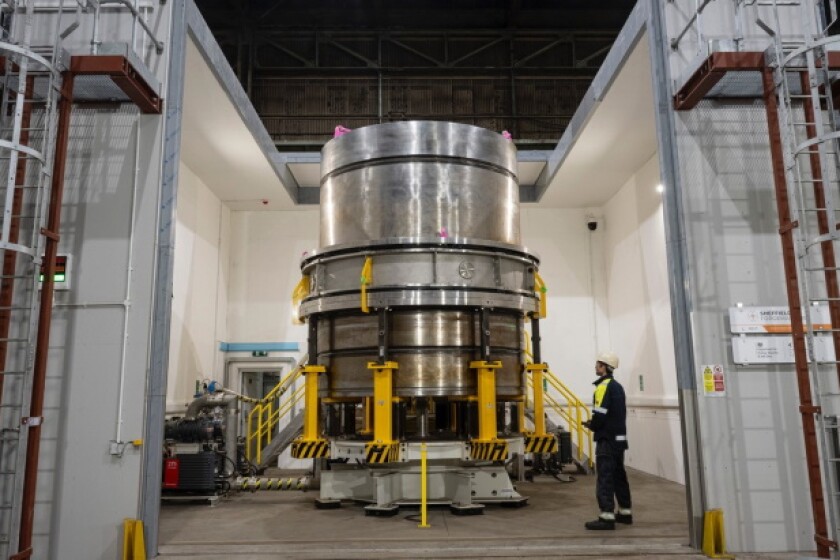Nuclear SMR Welding Breakthrough, From a Year to a Day

Sheffield Forgemasters
The construction pace of Small Modular Reactors (SMRs) accelerates significantly, with Sheffield Forgemasters, a UK company, completing the welding of a full-size nuclear reactor vessel in less than 24 hours, a stark contrast to the usual 12-month timeframe. The widespread adoption of this groundbreaking technology has the potential to be immense.
Modular reactors hold promise for transforming the nuclear power sector, shifting from large-scale civil engineering endeavors to factory-produced commodities. Unlike traditional reactors that are custom-built, modular reactors feature standardized designs, enabling mass production and installation in quantities tailored to local demands, all without the need for the costly infrastructure typical of conventional reactors.
Overcoming Bottlenecks with Local Electron-Beam Welding (LEBW)
The challenge lies in overcoming bottlenecks associated with reactor construction, particularly in the fabrication of reactor vessels crucial for containing the reactor core and maintaining its isolation from the surrounding environment. Traditional methods of welding these vessels typically exceed a year in duration, yet Sheffield Forgemasters has dramatically reduced this timeframe to less than a day through the utilization of Local Electron-Beam Welding (LEBW). This innovative technique facilitates the completion of four thick, nuclear-grade welds.
LEBW represents a groundbreaking approach to joining metal components, employing a high-energy density fusion process centered around a powerful electron gun operating within a localized vacuum environment. This process effectively melts and fuses the materials together, boasting an impressive efficiency rate of 95%, substantial penetration depth, and a favorable depth-to-width ratio.
Innovative Fabrication Achievements
As a result, Sheffield Forgemasters successfully fabricated a vessel measuring three meters (10 ft) in diameter with walls 200 mm (8 in) thick, boasting zero defects and reduced costs. Moreover, the welding machine incorporates innovative sloping-in and sloping-out techniques for commencing and concluding the weld.
This groundbreaking achievement, a global first, represents a significant advancement for the British nuclear industry, which has experienced limited progress in recent decades, primarily focused on reactors for nuclear submarines, a few showcase power plants, and nuclear fuel processing. Now, the UK government is embracing a nuclear renaissance, with plans for new plants, including the construction of 15 modular reactors by Rolls-Royce.
“The impact of this technology on the nuclear sector cannot be overstated, potentially eliminating high-cost welding processes,” noted Michael Blackmore, Senior Development Engineer and Project Lead. “This not only reduces the necessity for weld inspections, as the welded joint replicates the parent material, but it also has the potential to significantly accelerate the deployment of SMR reactors across the UK and beyond. That’s how transformative the LEBW breakthrough is.”
Read the original article on: New Article
Read more: Semi-transparent Solar Cell Achieves Groundbreaking Energy Conversion rates










